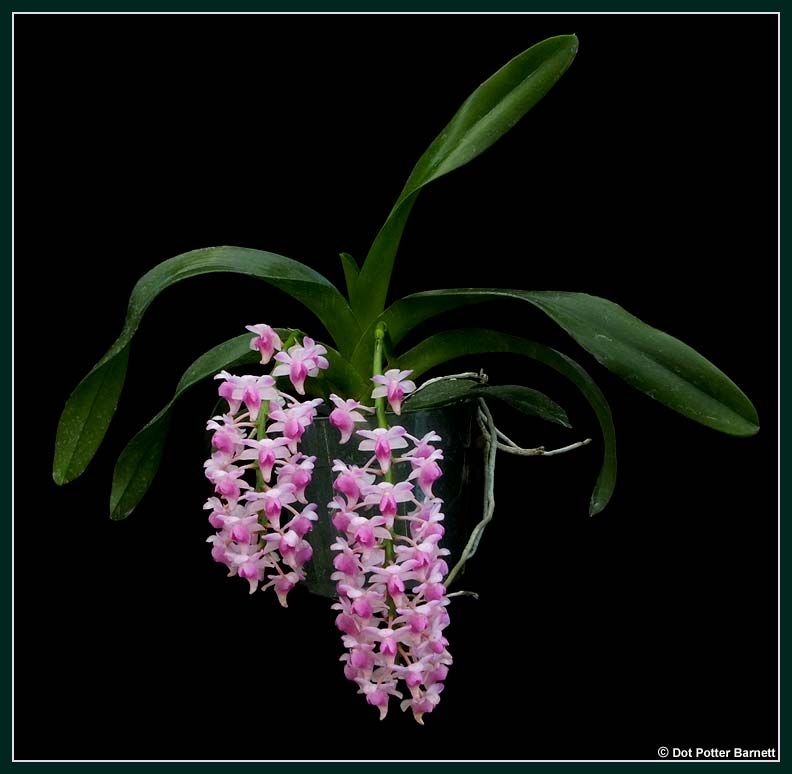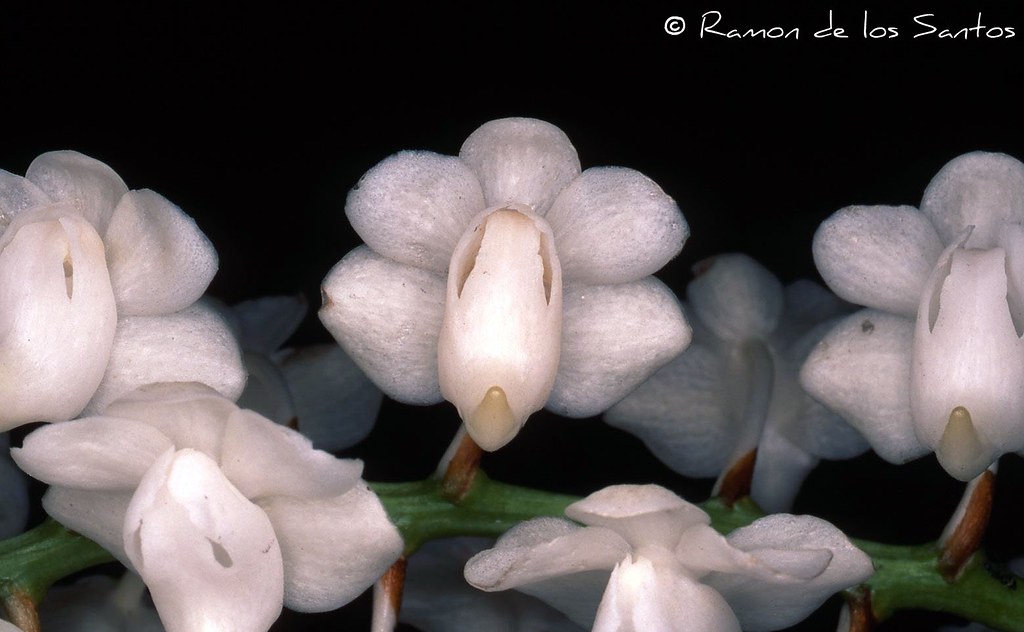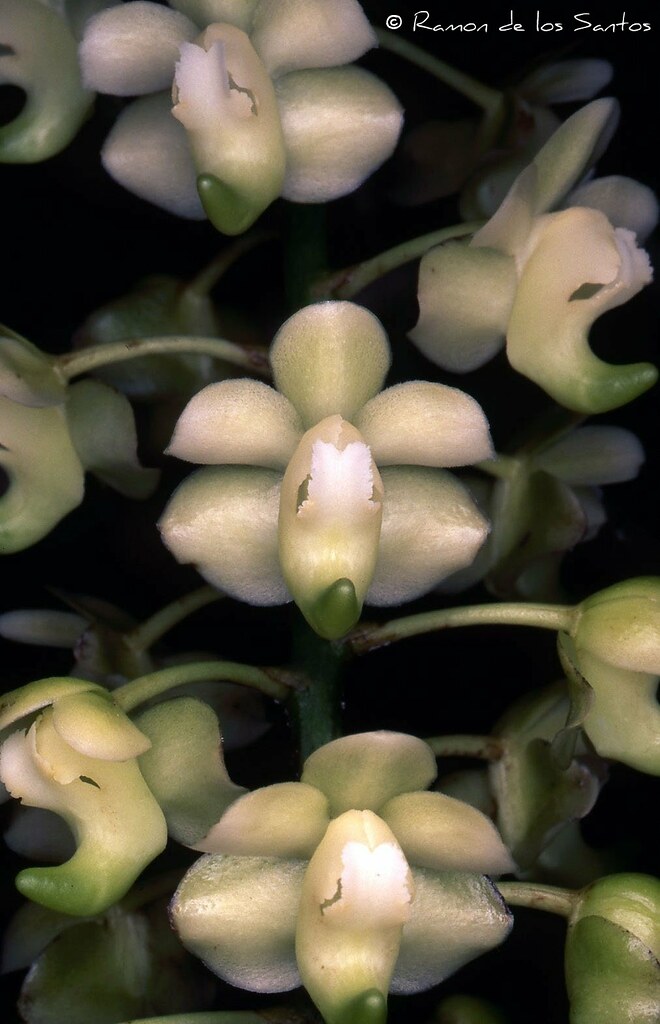More from Peter O'Byrne:
If we are going to follow horticultural conventions, then I'd say your plant is a (rather nice) hybrid between A. lawrenceae and either A. quinquevulnera or a Philippine form of A. odorata. I have been shown similar plants before by Philippine collectors, who say they occur in the wild. They wanted me to describe them as a new species; I declined. It isn't that I don't believe them; I'm sure they were telling the truth, and that wild populations exist. For me, the issue is a taxonomic one, involving the status of A. odorata, A. quinquevulnera and A. lawrenceae.
In the western part of its range, A. odorata usually has a linear midlobe with entire lateral margins. However, the population in Peninsular Malaysia and Thailand can be divided into northern and southern races .... the northern race is tetrapoid (76 chromosomes) while the southern race is diploid (38 chromosomes) [Ref: Kamemoto & Sagarik, Beautiful Thai Orchids (1975): 11]. The northern race was described by Carr as A. odorata var. bicuspidata, and some plants have a midlobe with erose to toothed lateral margins. So the entire/erose/toothed midlobe margins are not a reliable character for differentiating between species.
Many people (including Ramon) state that A. quinquevulnera has toothed lateral margins to the midlobe. While this is usually true, it is not always the case. In Ames & Quisumbing's New or Noteworthy Philippine Orchids IV (Phil. J. Sci. December 1934), there is a description & photos of A. quinquevulnera Lindl. var. album Williams, based on plants collected in Calayan Island. These specimens have midlobe lateral margins that are entire, or at the most, very slightly uneven, much like the plant in Ramon's photo. This suggests that "var. alba" is likely to be the correct name for "var. calayana". I don't know why this taxon doesn't show up in the Kew Checklist; the absence implies that the name is invalidly published, though it may have been overlooked. From a taxonomic point of view, the Calayan plants merely confirm that there is no specific difference between A. odorata and A. quinquevulnera.
A. lawrenceae Rchb.f. is taxonomically the most difficult to deal with. Plants from the Philippines typically have a relatively broad midlobe that is folded along the longitudinal axis, and toothed lateral margins. Identical plants occur in South-East Sulawesi. However, some Philippine plants have a narrower, more linear midlobe that is folded and toothed. This brings A. lawrenceae very close to the northern race of A. odorata (Carr's A. odorata var. bicuspidata). To see what I mean, have a look at the Senghas drawing of a Thai specimen (identified as A. lawrenceae) at:
http://orchid.unibas.ch/phpMyHerbar...ceae/Reichenbach_Heinrich_Gustav/specimen.php
Is this plant A. lawrenceae or A. odorata ?
I would like to maintain A. lawrenceae as a valid taxon, but it is too close to A. odorata to be treated as a distinct species. For the moment, I'm following Holttum and treating it as A. odorata var. lawrenceae, though I recognise that even this distinction may be unsustainable.
So, back to your plant. The Philippine collectors I mentioned wanted me to describe it as a species. The best I could have done would be to describe it as an inter-varietal hybrid (A. odorata var. lawrenceae x A. odorata var. odorata). What would be the point of doing that ? You can go down this path indefinitely, splitting taxa into ever smaller groupings, without adding anything meaningful to our knowledge of orchids. So I declined the offer.







